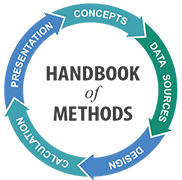An official website of the United States government
 United States Department of Labor
United States Department of Labor

Classification systems are ways of grouping and organizing data so that they may be compared with other data. The type of classification system used will depend on what the data are intended to measure. Some datasets may use multiple classification systems.
Geography. Political boundaries such as country, state, and county lines tend to be fixed and don’t change over time. Cities and metropolitan areas tend to be classified by population and commuting patterns observed in the decennial census.
For some of the metropolitan area definitions in use at BLS, see
For geographic area information by program, see
Industry. Surveys of businesses use industry classification systems to classify businesses by their activity, or production process. The classification system in use for most BLS programs that collect industry data is the North American Industry Classification System (NAICS). Prior to NAICS, BLS used the Standard Industry Classification (SIC) system.
For more information on these classification systems, see
Occupation. Occupational classification systems group workers by the duties they perform. The occupational classification system in use for BLS programs is the Standard Occupational Classification (SOC) system.
For more information on the SOC, see
Commodity. Commodity classification systems group products together.
For more information on these classification systems, see